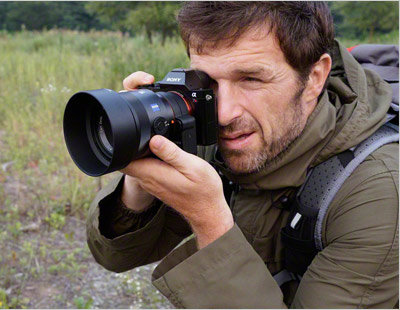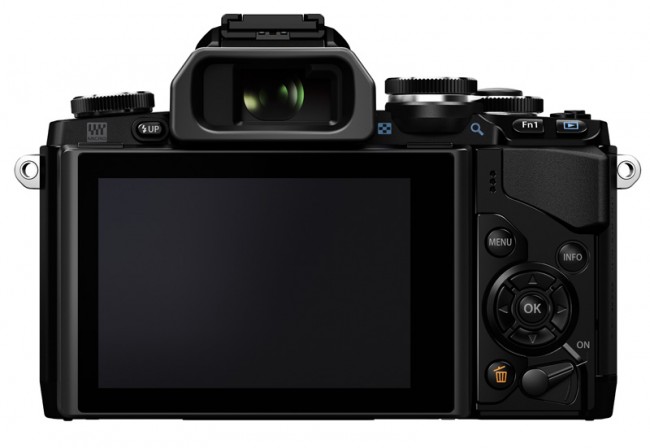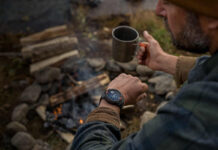 Now that the spring is here, I’ve noticed how little I saw my neighbours this winter. I think we all spend a lot of time indoors during the winter, even here in Vancouver where the weather is as mild as it gets in Canada. Well now that the daffodils are out, it’s time to dust off the photography equipment and get out there and start enjoying the outdoors again.
Now that the spring is here, I’ve noticed how little I saw my neighbours this winter. I think we all spend a lot of time indoors during the winter, even here in Vancouver where the weather is as mild as it gets in Canada. Well now that the daffodils are out, it’s time to dust off the photography equipment and get out there and start enjoying the outdoors again.
Speaking of camera equipment; maybe it’s time to consider some updates. If you feel like your camera’s a little out of date, or you think it’s time to get more serious about your photography, I’m going to give you my recommendations for some springtime upgrades.
Cameras
I’ve had a few people ask me for camera recommendations lately, and for the most part I’m advising people to look at mirrorless cameras (also known as ‘compact system cameras’ or ‘Micro Four Thirds’). This really has been the ‘hot’ category in photography over the last couple of years, where we’ve seen some major innovations from the likes of Sony, Fujifilm, Olympus and Samsung. Mirrorless cameras carry at least as much functionality as DSLRs from the likes of Canon and Nikon, and often come with wireless capabilities too, which enables you to easily download and share images.
 The major difference between the mirrorless camera and the DSLR is (surprise, surprise) the lack of a mirror. The mirror in a DSLR exists to allow you to look through the lens of the camera via the viewfinder, and it takes up a lot of space inside the camera body, so removing it allows for a more compact, and hence portable design. One of the downsides of mirrorless cameras initially was the lack of a viewfinder, which purists didn’t like because it forces you to compose your images using the LCD screen, and many feel that detracts from the overall photography experience. The latest crop of mirrorless cameras, however, do have a viewfinder which contains a tiny little LCD screen of it’s own (like the Olympus OM-D EM-10, pictured), and in most cases this actually gives you a realtime view of what your final image will look like, unlike a DSLR which just shows your composition and tells you nothing about your exposure or white balance, for example.
The major difference between the mirrorless camera and the DSLR is (surprise, surprise) the lack of a mirror. The mirror in a DSLR exists to allow you to look through the lens of the camera via the viewfinder, and it takes up a lot of space inside the camera body, so removing it allows for a more compact, and hence portable design. One of the downsides of mirrorless cameras initially was the lack of a viewfinder, which purists didn’t like because it forces you to compose your images using the LCD screen, and many feel that detracts from the overall photography experience. The latest crop of mirrorless cameras, however, do have a viewfinder which contains a tiny little LCD screen of it’s own (like the Olympus OM-D EM-10, pictured), and in most cases this actually gives you a realtime view of what your final image will look like, unlike a DSLR which just shows your composition and tells you nothing about your exposure or white balance, for example.
There are two major downsides of the mirrorless camera at this point however, and those are the price and the battery life. As a relatively new technology, mirrorless cameras are more expensive to manufacture than DSLRs, and this is reflected in a higher retail price. Lens prices tend to be higher too, and there is less variety, particularly from third party manufacturers. If you buy a Canon T5i for example, you have a huge range of Canon lenses to choose from, plus lenses from manufacturers like Sigma and Tamron.
Battery life is something that’s disappointed me with the mirrorless cameras I’ve had the chance to try out so far. Seeing that little red flashing battery symbol was a bit of a surprise to me because when I shoot with my DSLR, I almost never run out of battery power.
So if you are thinking about a camera upgrade, I can highly recommend the Fujifilm X-A1 on the mirrorless side, or the Nikon D3200 on the DSLR side.
 Lenses
Lenses
Right after I recommend a camera to someone, I make one further recommendation: buy a new lens too. In general the lens that comes with your camera kit will not be of the highest calibre. It’s really just there to get you started and for the most part doesn’t do justice to the capabilities of the camera body itself. Prime lenses are a great place to start. These are lenses which have a fixed focal length and no zoom capabilities. They contain less optical elements than a zoom lens, and because of this they have better clarity and sharpness. They also tend to be more compact, which is great when you carry your camera around a lot. To Canon DSLR shooters I always recommend the 50mm f/1.8. Nikon also does a 50mm f/1.8 (pictured), which is highly regarded. When I bought my Fujifilm X-A1 I also invested in a 23mm lens which is the most compact lens Fujifilm makes for the X-Series.
Memory Card
If you’re still shooting with an old 256MB card, or anything under 4 gigabytes, well then you definitely want to think about buying a new memory card, at least 8 gigs in size. Storage space, like computing power, is one of those things that gets cheaper every year, so this is an update that won’t cost you much. Now the reason I recommend this update is not so that you can store more images on your camera, and neglect to back them up on your computer (bad idea), but so that you can start shooting in and start exploring the possibilities open to you in post-processing. Similar to what I said earlier about using good lenses, shooting in RAW mode allows you to really see what your camera is capable of. You get all of the information, uncompressed, from the sensor, and this can be your starting point for taking your photography to the next level.
 Camera Bag
Camera Bag
If you’re planning to expand your camera equipment collection, then you will definitely need a suitable bag to carry it all in. Personally, I have three different bag sizes which I use depending on the amount of equipment I need to bring with me. Right now, I’m really impressed with the bags I’m seeing from the Vanguard company. If I was starting my bag collection from scratch, I’d probably look at a small bag like the 2GO shoulder bag, a medium bag like the Vojo (pictured), and a big case like the Xcenior. Of course it all depends on your needs. If you like to hit the trails and do some nature photography you might like the Kinray, for example.
Tripod
A tripod is probably one of the most underrated pieces of camera equipment there is. But there are a couple of instances where it is absolutely vital. I wrote a piece recently about night photography, and now that the temperatures are getting milder it’s a great time to try some of the techniques I spoke about. Night photography requires long exposures which you can’t make holding the camera in just your hands, so a good tripod is vital. Also if you want to pursue nature photography, it is strongly advised that you pack a tripod. In order to photograph nature effectively you really need to slow down and think about your surroundings and the image you want to make. Using a tripod forces you to slow down and think about your composition, which in the end leads to much stronger work. Manfrotto is one of the leading tripod manufacturers and their MK394-PQ Ball Head tripod is an excellent and sturdy tripod.
So there you have it, my top 5 photography equipment upgrades for Spring 2014, hopefully there’s something in there that tickles your fancy!








